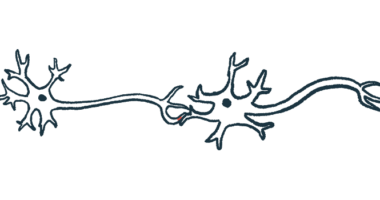Brain, spinal cord problems persist for 6 children on long-term ERT
Stable, worsening cognitive ability suggested 'developmental plateauing'

Despite being on enzyme replacement therapy (ERT) for a long time, some children with infantile-onset Pompe disease (IOPD) can still develop problems in the brain and spinal cord, a small study suggests.
Manifestations such as overactive bodily reflexes, encephalopathy (damage to the brain), and seizures were associated with white matter lesions on brain scans. White matter bridges information between different regions of the brain.
The findings come from six children who took part in clinical trials at Duke University in Durham, North Carolina. The study, “Severe CNS involvement in a subset of long-term treated children with infantile-onset Pompe disease,” was published in Molecular Genetics and Metabolism by researchers in the U.S., who said more research is needed to understand why these manifestations occur and how to prevent them.
Pompe disease occurs when the body lacks a working acid alpha-glucosidase (GAA) enzyme to break down the sugar glycogen, leading to a range of symptoms. In IOPD, symptoms become apparent within the first few months of life, with early complications including heart muscle disease, delayed motor development, and difficulty breathing.
ERT, which involves providing the body with functioning GAA, works by reducing the buildup of glycogen and slowing disease progression. ERT doesn’t reach the brain and spinal cord, however.
This means some patients may develop problems in the central nervous system (CNS), which comprises the brain and spinal cord. Here, the researchers describe the cases of six children with IOPD who developed CNS problems despite being on long-term ERT.
“These cases provide new insights to the understanding of the wide clinical spectrum among survivors of IOPD,” the researchers wrote.
CNS deterioration despite long-term ERT
The six children were enrolled in two ongoing clinical trials (NCT01665326 and NCT04639336) on the natural history of IOPD, and the extent and severity of CNS involvement, respectively. The natural history trial also evaluated the response to Lumizyme (alglucosidase alfa), an ERT.
All six children (four boys, two girls) had been on ERT for 12 and up to 15 years. They had started at a median age of 5 months after being diagnosed at a median 3.75 months. Encephalopathy and seizures began to manifest at a median age of 11.9 years.
“Of note, the presentation of each of these patients was consistent with the typical features of Pompe disease until the onset of CNS symptoms,” wrote the researchers, who graded the severity of brain abnormalities on MRI scans using a scoring system and then tracked the children’s cognitive development over time.
On MRI scans, all the children had extensive white matter lesions, a sign of brain damage. The lesions were noted on both sides of the brain and occurred before the children had shown CNS involvement.
The Fazekas scale was used to describe the severity of white matter lesions. The total score ranges from 0 to 27, with a score of 15 or more indicating severe white matter involvement. The children scored a median of 20, ranging from 18 to 24.
“Radiologic involvement (as quantified by elevated Fazekas scores) and rate of progression of the Fazekas score deserves exploration as a potential biomarker that appears to precede clinical deterioration,” the researchers wrote.
Cognitive ability, as measured by intelligence quotient (IQ) and other tests, remained stable or worsened over time in four children, suggesting “developmental plateauing.”
“Further study is needed to identify risk factors for CNS deterioration among children with IOPD and develop interventions to prevent neurological decline,” they said.
The study was funded in part by Sanofi-Genzyme, which markets Lumizyme.







